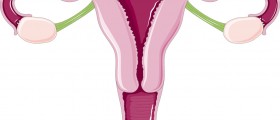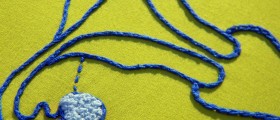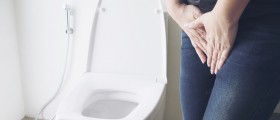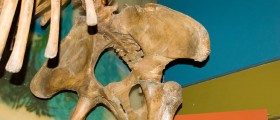There are many different reasons due to which women may experience fluttering and twitching in their lower "stomach" (the lower abdominal area, closer to the uterus). The most common reason for this symptom, however, is pregnancy. If this is ruled out with a pregnancy test, then many other possibilities come into play. In some women, this symptom could be caused by nerve endings, in which case this could also be completely normal, especially after a recent birth or delivery, related surgery, and even a miscarriage.
Additionally, in many cases scar tissue is pronounced in the uterus and cervical areas. Similar to what happens in some C-section cases, the nerves commingle with the scarred tissues and oftentimes, new connections and endings are formed.

Other Causes of fluttering in the abdominal area
Other possibilities that could explain these symptoms include:
- Other digestive and systemic diseases, such as gas, constipation, acid reflux disease
- Indigestion
- Tumors and cancer
- A hiatal hernia
- Heartburn
- Inflammation of the lining of the stomach
- Stomach ulcers
- Alcoholic liver disease
- Irritable bowel syndrome and Crohn's disease
- Inflammation of the diverticulum inside of the digestive tract
- Spleen disorders
- Inflammation of the gall bladder, gall bladder cancer, and pancreatic disorders
- Parasites such as tapeworms
- Pelvic issues
- Stress and anxiety
Another possibility when you are experiencing flutters in your lower abdomen and know that you are not pregnant is that over-exertion and over-exercise or even very poor posture, can also cause the twitches. Too often. people perform exercises and lift weights incorrectly. This is something to bear in mind. Also, certain exercises are just not suitable for certain individuals and body types, and performing them despite that can lead to severe damage, and at 'best' they can lead to cramps and pain in the abdominal area.
Sitting for long periods can also trigger twitches, and spasms that are sometimes even painful.
As strange as this sounds; if the fluttering sensations are in sync and are very similar to that of your heart beat; it could be a very familiar phenomenon that happens to some people, especially if they are extremely thin. See, for those individuals who are of a slighter or thinner build or body type; they tend to feel sensations and pulses from arteries much more easily and even more frequently than those of larger build. This is definitely a possibility, and so it should not be negated. A cyst, disruption in an arterial wall, or blood vessel structural blockage could also be the culprit.
Any or a combination of the above conditions could cause fluttering and muscles spasms in the uterus and lower abdominal area. It is especially possible that this fluttering sensation could be originating from the colon; since the colonic structure makes it very likely for you to get this type of 'flutter-like' sensations, In these cases, try to see if it happens more often if you eat "gassy" foods such as beans and cabbage, and passes when you go to the toilet.
Diagnosis and Treatment
The bottom line is that it is not only difficult but also impossible to determine for sure what is or what it is not causing your uncomfortable symptom, so please speak to and see your doctor. Especially since these fluttering sensations could be caused by something more serious, it is important to never simply ignore them. Your doctor will order the appropriate tests including but not limited to a colonoscopy, and ultrasound.
It is important to visit your doctor, so he or she can conduct this process of elimination and rule out the possibilities that should be ruled out, and take steps sooner rather than later to correct the problem or discomfort. While you are waiting to see a doctor, it would be a good idea to pay very keen attention to this issue. You should also consider keeping a log, and record the sensations, the times you experience the flutters, how long they lasts, and so on. This will give your doctor valuable information that will speed up your diagnosis and treatment.
- Photo courtesy of SteadyHealth
















